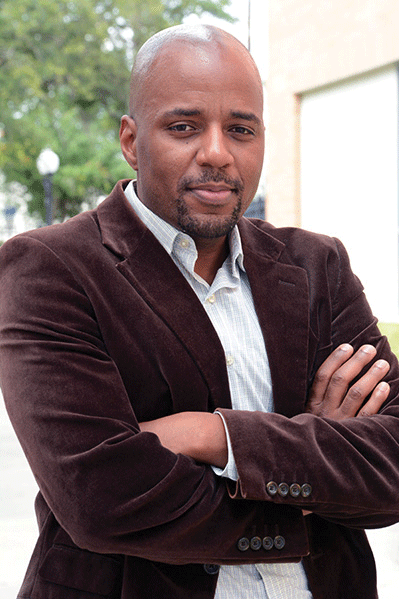Fighting Poverty Through Proposed Reconstruction of the I-81 Interstate

SUNY ESF Professor Lemir Teron discusses potential plans to replace Syracuse’s I-81 interstate. This would reconnect neighborhoods and redirect government funding.
On December 1, Professor Lemir Teron of SUNY’s College of Environmental Science and Forestry (ESF) spoke to students at the African, Latino and Asian Native American (ALANA) Cultural Center about his work regarding the replacement of Syracuse’s deteriorating I-81 interstate.
Titled “Expressway to (in)equity – Environmental Justice, Public Involvement and Interstate Redevelopment,” Teron examined the debated plans to replace or restructure I-81 through the lens of environmental justice and community involvement. Depending on which plan is chosen, deconstructing I-81 would potentially opens doors for curbing Syracuse’s poverty issue by eliminating the interstate’s viaduct to reconnect the neighborhoods split up by I-81’s initial construction.
Junior and Environmental Economics major Will Holding provided input on the subject.
“Environmental justice may seem like a grand, elusive concept, but there are so many tangible ways to address [inequality],” Holding said. “Undesirable infrastructure often gets placed around marginalized and low-income people …structures like the interstate, a factory, a power plant” Holding said.
Teron discussed how the Home Owner’s Loan Corporation (HOLC) used redlining to direct government funding toward areas in Syracuse that were deemed “desirable” while the area surrounding I-81 was labeled “definitely declining.” The rate of concentrated poverty for black and Latino people in Syracuse is the highest in the nation, partially because of HOLC’s discriminatory zoning policies.
Many of the houses in Syracuse are 90-100 years old and were built prior to lead regulation laws. Since many are painted with lead, Syracuse has some of the highest childhood lead exposure rates in the country.
“Inequality [in Syracuse] is palpable,” Teron said. “I can taste it. I can smell it. I can feel it.”
Teron mentioned an upcoming discussion organized by the Syracuse Department of Transportation, which is planned for January and includes a panel of experts such as Teron and representatives from housing and transportation organizations within Syracuse. However, Teron lamented the exclusion of Syracuse residents who are going to be directly affected by the interstate plan.
First-year Victoria Basulto echoed his concerns on the subject.
“It’s up to the community to stand up for themselves,” Basulto said. “It shouldn’t be them, but it’s going to have to be. If this was my neighborhood, I wouldn’t want to put my faith in someone that wouldn’t have my best interests in mind.”
Teron compared the I-81 to the Berlin Wall because the 1.4 mile interstate viaduct splits the community in two – bisecting public housing, and universities such as the Upstate Medical Institute and SUNY ESF.
Plans to solve the I-81 issue include reconstructing the viaduct to meet safety standards, building a tunnel underneath the street, or the “Community Grid” option, which entails demolishing the interstate and building a surface street which would intersect the existing infrastructure. Teron said that neither option is ideal, but the “Community Grid” is preferable because it reconnects the separated neighborhoods and allows for better urban development on the street.
Although the New York Department of Transportation began its work on the environmental impact statement to address potential negative effects of the various plans on the environment in 2013, the statement still has not been released. Teron said the community cannot move on with any plan until the statement is released.
“Let’s get an informed environmental impact statement, let’s go through it comprehensively” Teron said. “Let’s go through social, environmental, and economic impact, and then we will make an informed decision.”
Contact Michael Rasmussen at [email protected].






